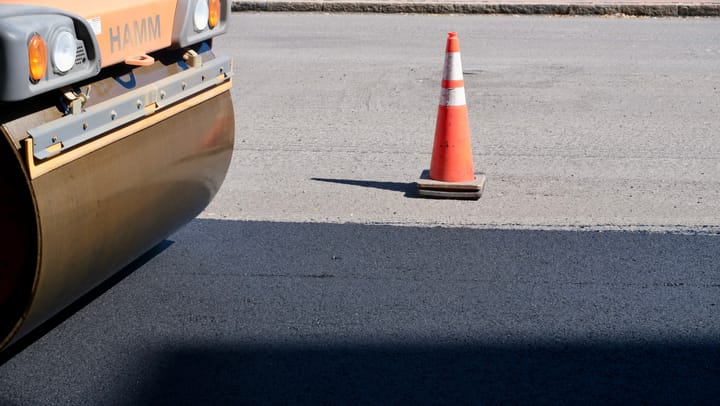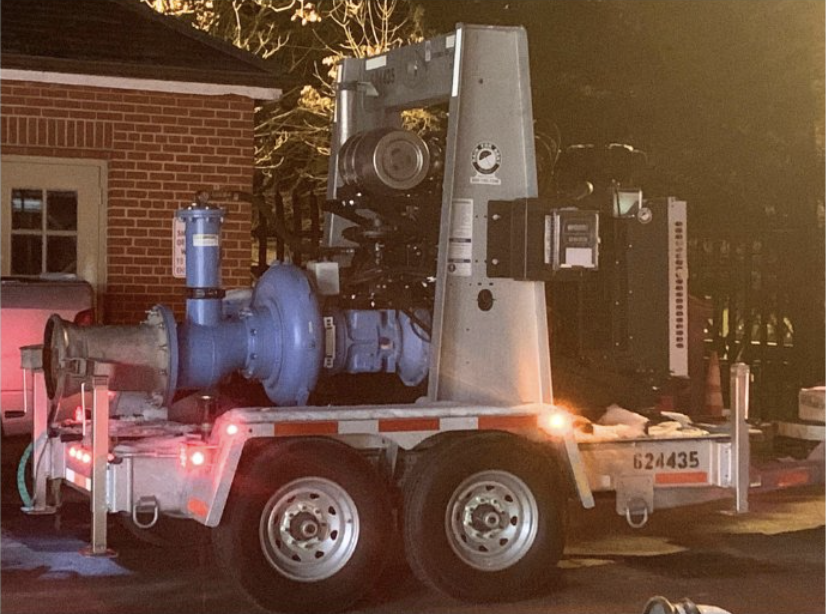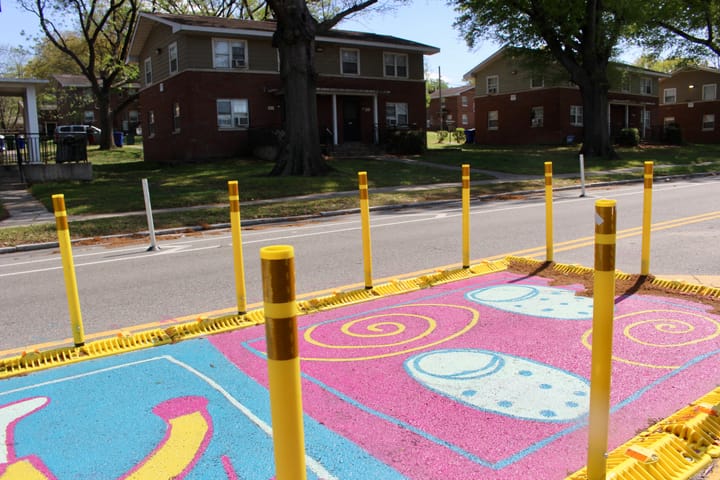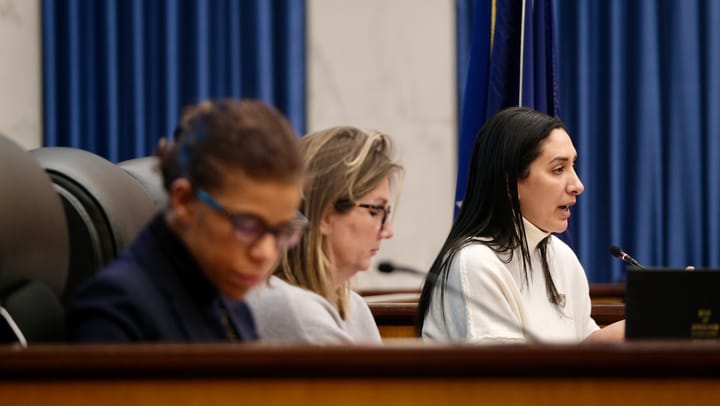Wednesday meeting will discuss Fall Line Trail’s route through Bryan Park

As the Fall Line Trail becomes a reality in the counties, Richmond is still grappling with how to direct the trail through Bryan Park, with several options set for discussion at what could be a contentious Wednesday night meeting.
The trail, which will run from Ashland to Petersburg, is a north-south version of the Virginia Capital Trail that connects Richmond and Williamsburg.
Last August city officials held a groundbreaking in Bryan Park, which was protested by a group of neighbors who are asking City Council to revisit the trail’s planned path, citing potential disruption to the park and a lack of public input.
The path currently slated for construction was initially proposed in the Richmond 300 master plan and later approved, with minor tweaks, by the city’s Urban Design Committee. It is shown on the map below as the green path.
Alternate paths shown in pink and orange produce a longer path through the park and largely leave the park’s main gathering points disconnected from the trail. The white trail is a proposed compromise that parallels the path of Interstate 95. The city has contracted a third-party group to study that option.
Sports Backers, a nonprofit that promotes active living, has helped shape the trail regionally through its Bike Walk RVA program. The group is advocating for the green path, which produces a shorter route for commuters as well as connecting the Fall Line Trail with Bryan Park’s sports fields, picnic areas and other amenities.
Brantley Tyndall, director of Bike Walk RVA, said the park doesn’t have ADA-compliant pathways, which results in potentially dangerous situations.
“You go to the park today, and you see people pushing strollers, people getting around with walkers and wheelchairs in the road, because that’s the only paved way to get around in the park now,” he said. “This trail will help the most people the most.
“When families travel to Bryan Park for the youth in the family to play soccer or go to the playground, the grandparents will be able to get back to their car or go to the bathroom. It’s just an all-around better product for people biking, walking, pushing a wheelchair and beyond.”
On the other side Wednesday night will be Chuck Epes, who co-founded the Citizens for a Responsible Fall Line Trail group.
For Epes, disconnecting the trail from the park’s amenities is a positive, not a negative.
“There are safety issues that we feel are being glossed over,” he said. “They want to run this trail right beside the most popularly used picnic shelter — I mean, within feet of it. And they want to run it within a few feet of a very popular playground.
“They want to run it right beside incredibly popular, well-used soccer fields there. And it just seems like, if you’re going to put this trail through the park, put it someplace away from all this congestion, with already too many people and too many cars and too much foot traffic.”
He said his group will propose on Wednesday building an ADA-accessible sidewalk connecting the park’s amenities, and moving the Fall Line Trail away from those areas.
Epes added that he has not yet seen the city-commissioned study on the compromise white path, which could be available as soon as Wednesday's meeting.
Tyndall, with Sports Backers, said the white path would produce a dangerous environment for cyclists by routing them around a tight turn and across a narrow bridge.






